Lobuche Peak Climbing
Lobuche Peak is one of the popular peaks for climbing in the Khumbu region of Nepal. It is located close to Mount Everest and offers stunning views of the surrounding Himalayan mountains. The Lobuche Peak Climbing trip is a challenging and adventurous trek that takes you through the beautiful Khumbu Valley and offers an opportunity to climb a Himalayan peak.
The climb requires some mountaineering experience and technical skills, but it is a great peak for those looking to step up from basic trekking to mountaineering. The Lobuche Peak Climbing itinerary is usually around 16-18 days long and includes acclimatization days to adjust to the altitude.
The trek starts with a scenic flight from Kathmandu to Lukla, followed by a trek to the village of Namche Bazaar, the gateway to the Khumbu region. The trek then proceeds to the village of Lobuche, where climbers will begin their ascent of the peak. The route to the summit of Lobuche Peak involves technical climbing on ice and rock, with steep ascents and descents. Climbers will be accompanied by experienced guides and Sherpas who will ensure safety during the climb.
The Lobuche Peak Climbing trip offers a chance to explore the natural beauty and cultural richness of the Khumbu region, including the famous Sherpa villages, monasteries, and glaciers. The trek offers stunning views of Mount Everest, Lhotse, Nuptse, Ama Dablam, and other peaks in the region.
Outline Itinerary:
Day 1: Arrival in Kathmandu
Day 2: Kathmandu to Lukla to Phakding (2,651m/8,700ft)
Day 3: Phakding to Namche Bazaar (3,438m/11,280ft)
Day 4: Acclimatization day in Namche Bazaar
Day 5: Namche Bazaar to Tengboche (3,870m/12,694ft)
Day 6: Tengboche to Dingboche (4,360m/14,300ft)
Day 7: Acclimatization day in Dingboche
Day 8: Dingboche to Lobuche (4,940m/16,207ft)
Day 9: Lobuche to Gorak Shep (5,160m/16,929ft) to Everest Base Camp (5,364m/17,594ft) and back to Gorak Shep
Day 10: Gorak Shep to Kala Patthar (5,545m/18,192ft) to Lobuche
Day 11: Lobuche to Lobuche Base Camp (4,950m/16,240ft)
Day 12: Lobuche Base Camp to High Camp (5,400m/17,716ft)
Day 13: Summit Day (6,119m/20,075ft) and back to High Camp
Day 14: Reserve Day for ContingencyDay 15: High Camp to Pangboche (3,985m/13,074ft) Day 16: Pangboche to Namche Bazaar Day 17: Namche Bazaar to Lukla
Day 18: Lukla to Kathmandu
Day 19: Departure from Kathmandu
Itenerary
-
Day 1: Arrival in Kathmandu
- Arrive in Kathmandu, meet your trekking agency representative, and transfer to your hotel.
- Spend the day resting and preparing for your trek. You may explore Kathmandu if time permits.
-
Day 2: Kathmandu Sightseeing and Preparation
- Take a guided sightseeing tour of Kathmandu, visiting UNESCO World Heritage Sites such as Swayambhunath, Boudhanath, and Pashupatinath.
- Finalize climbing permits and equipment check.
-
Day 3: Fly to Lukla, Trek to Phakding
- Fly from Kathmandu to Lukla (2800m).
- Trek to Phakding (2652m).
- Begin your trek in the Everest region, passing through small villages and enjoying mountain views.
-
Day 4: Trek to Namche Bazaar
- Trek from Phakding to Namche Bazaar (3440m).
- Ascend steeply through the Dudh Koshi Valley, entering Sagarmatha National Park.
- Reach Namche Bazaar, a bustling Sherpa town and the gateway to the Everest region.
-
Day 5: Acclimatization Day in Namche Bazaar
- Rest and acclimatize in Namche Bazaar.
- Optionally, take a short hike to Everest View Hotel for panoramic views of Everest, Lhotse, and Ama Dablam.
-
Day 6: Trek to Tengboche
- Trek from Namche Bazaar to Tengboche (3860m).
- Visit the famous Tengboche Monastery, one of the largest monasteries in the Khumbu region.
-
Day 7: Trek to Dingboche
- Trek from Tengboche to Dingboche (4410m).
- Ascend gradually, enjoying breathtaking views of the surrounding peaks.
-
Day 8: Acclimatization Day in Dingboche
- Rest and acclimatize in Dingboche.
- Optionally, take a short hike to Nagarjun Hill for acclimatization and panoramic views.
-
Day 9: Trek to Lobuche
- Trek from Dingboche to Lobuche (4910m).
- Continue ascending along the Khumbu Glacier, with views of Tawache and Nuptse.
-
Day 10: Trek to Lobuche Base Camp
- Trek from Lobuche to Lobuche Base Camp (4950m).
- Set up base camp and prepare for the climb.
-
Day 11: Acclimatization and Training at Base Camp
- Rest, acclimatize, and undergo climbing training at Lobuche Base Camp.
- Review climbing techniques, safety procedures, and equipment usage.
-
Day 12: Summit Day
- Early morning start for the summit push.
- Climb Lobuche Peak (6119m) and enjoy stunning views of Everest, Lhotse, Nuptse, and other surrounding peaks.
- Descend back to Lobuche Base Camp.
-
Day 13: Contingency Day
Reserve day for summit attempt in case of unfavorable weather or other delays.
-
Day 14: Trek to Pangboche
- Trek from Lobuche Base Camp to Pangboche (3930m).
- Descend back along the Khumbu Glacier and retrace your steps towards Namche Bazaar.
-
Day 15: Trek to Namche Bazaar
Trek from Pangboche to Namche Bazaar.
-
Day 16: Trek to Lukla
- Trek from Namche Bazaar to Lukla.
- Enjoy your last day in the mountains and celebrate your successful climb.
-
Day 17: Fly to Kathmandu
- Fly from Lukla to Kathmandu.
- Transfer to your hotel in Kathmandu.
-
Day 18: Departure from Kathmandu
Depart Kathmandu for your onward journey or continue with further travel plans.
Full Board
Cost Includes:
Cost Excludes:
BC Service
Cost Includes:
Cost Excludes:
Price per person
Usefull Information
Inclusions:
- Airport transfers
- Accommodation in Kathmandu (usually on a twin-sharing basis)
- TIMS (Trekkers’ Information Management System) and Sagarmatha National Park permits
- Climbing permit for Lobuche Peak
- Experienced climbing guide and porters
- All meals during the trek (breakfast, lunch, and dinner)
- Tea and coffee during the trek
- Camping equipment (tents, sleeping bags, etc.)
- Climbing equipment (ice axes, crampons, ropes, etc.)
- Emergency first aid kit
Exclusions:
- International airfare
- Nepal entry visa fees
- Travel and rescue insurance
- Personal expenses such as alcoholic drinks, laundry, and phone calls
- Extra accommodation and meals in Kathmandu in case of early return or delay due to any reason
- Tips for the guide and porters (tipping is customary in Nepal)
- Any other expenses not mentioned in the inclusions
FAQs
-
What is Lobuche Peak?
Lobuche Peak is a popular trekking peak located in the Everest region of Nepal. It stands at an altitude of 6,119 meters (20,075 feet) above sea level.
-
How difficult is it to climb Lobuche Peak?
Lobuche Peak is considered a challenging climb, suitable for experienced trekkers and climbers. The ascent involves technical climbing skills such as fixed rope climbing, ice climbing, and traversing glaciers.
-
What is the best season for Lobuche Peak climbing?
The best time to climb Lobuche Peak is during the pre-monsoon (spring) season from March to May and the post-monsoon (autumn) season from September to November. During these months, the weather is relatively stable, with clear skies and moderate temperatures.
-
Do I need prior climbing experience to climb Lobuche Peak?
While prior climbing experience is not mandatory, it is highly recommended. Participants should have previous trekking experience at high altitudes and some basic mountaineering skills. It’s advisable to undergo training and preparation for ice and glacier climbing techniques before attempting Lobuche Peak.
-
How long does it take to climb Lobuche Peak?
The duration of the Lobuche Peak climbing expedition varies depending on the chosen route and climber’s experience. Typically, it takes around 14 to 18 days for the entire expedition, including acclimatization days and trekking to the base camp.
-
What permits are required for Lobuche Peak climbing?
Climbers need to obtain a climbing permit from the Nepal Mountaineering Association (NMA) to climb Lobuche Peak. Additionally, a Sagarmatha National Park permit and TIMS (Trekkers’ Information Management System) card are also required as the climb starts from the Everest region.
-
Is it necessary to hire a guide or join a guided expedition for Lobuche Peak climbing?
While it’s possible to attempt Lobuche Peak independently, hiring an experienced guide or joining a guided expedition is highly recommended. Guides provide essential support, navigation assistance, and safety measures during the climb, increasing the chances of a successful summit.
-
What is the accommodation like during Lobuche Peak climbing?
Accommodation during Lobuche Peak climbing typically involves staying in tea houses or lodges along the trekking route. At higher altitudes, basic teahouses may be available, offering simple rooms with shared facilities. Camping is required at the Lobuche Peak base camp and higher altitudes during the climbing phase.
-
What are the main challenges of climbing Lobuche Peak?
Some of the main challenges of climbing Lobuche Peak include high altitude, extreme weather conditions, technical terrain, and physical exertion. Altitude sickness is a significant concern, so climbers need to acclimatize properly and be prepared for the harsh mountain environment.
-
What should I pack for Lobuche Peak climbing?
Essential items to pack for Lobuche Peak climbing include high-altitude mountaineering gear, warm clothing, trekking boots, climbing equipment (such as crampons, harness, and ice axe), personal medications, sleeping bag, and other necessary supplies for the expedition.
-
 Best Seasons spring
Best Seasons spring -
 Duration 19 days
Duration 19 days -
 Trek Difficulty Moderate
Trek Difficulty Moderate
Trip Fact
Quick Inquiry

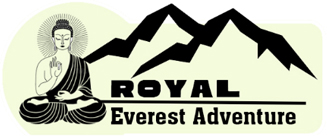
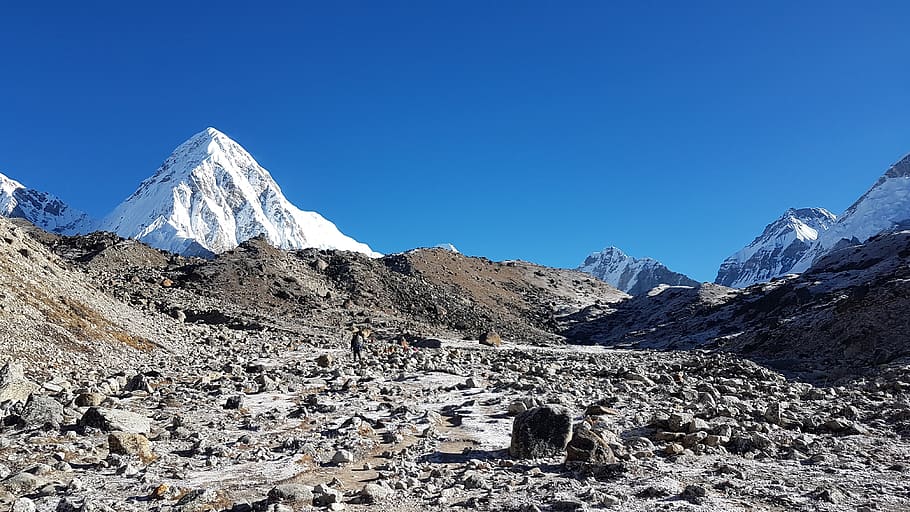

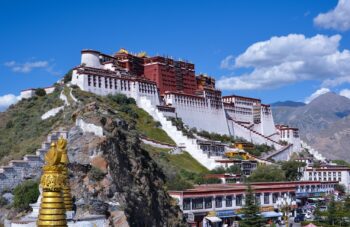
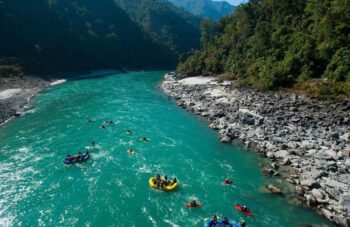
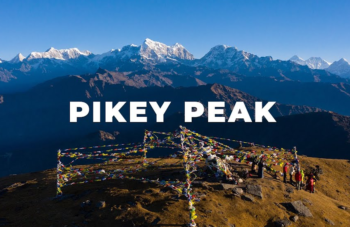
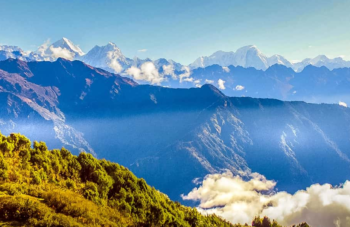
Leave a Reply